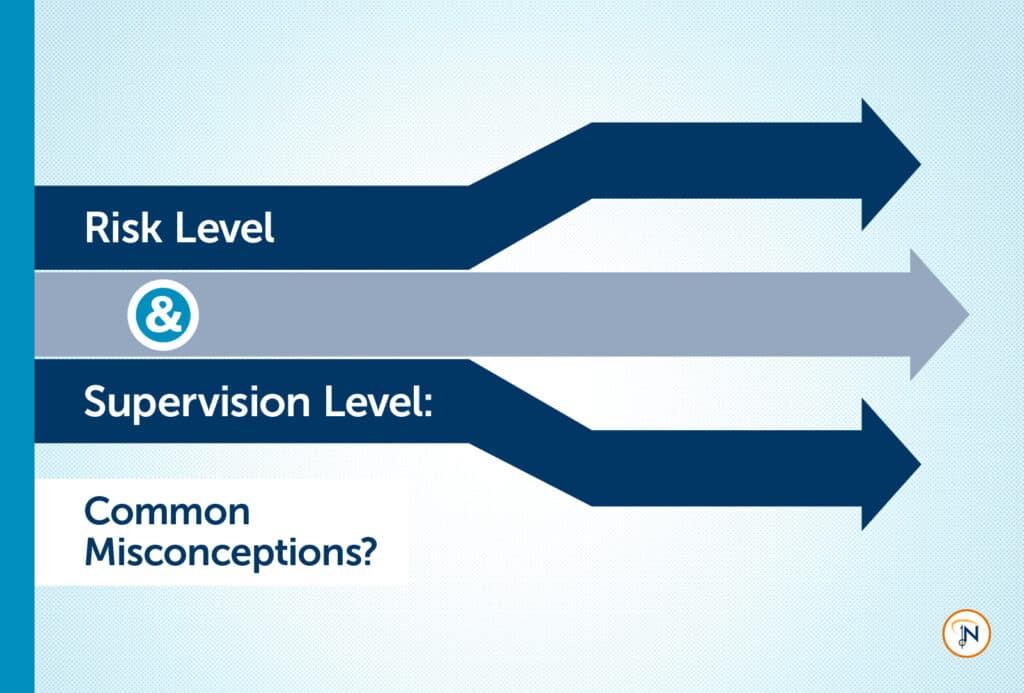Risk level and supervision level don’t match up on a clean 1:1 basis, and it’s up to supervision professionals to understand the nuances of each to make appropriate supervision decisions.
Risk and supervision levels are two distinct guidelines based on different inputs, and risk level should be used to inform supervision level, not replace it.
Let’s take a closer look.
What is risk level?
A person’s risk level is a score indicating their likelihood of reoffending. It’s predictive. It takes into account mostly static factors like criminal history, and it includes several dynamic factors like like voc/ed and substance abuse. The static and dynamic factors that are included in a risk score are ones that have been scientifically proven to be associated with increased risk of reoffending.
Risk is a starting event. Everyone under your agency’s supervision should undergo risk assessment, and their risk score should inform their supervision plan. This may include treatment strategies to address the offender’s dynamic risk factors, and it helps you make appropriate supervision decisions for administrative vs. intensive supervision, drug testing, electronic monitoring, reporting requirements, and more.
What is supervision level?
Supervision level is a type of classification. It breaks probationers and parolees into subgroups that share the same intensity of supervision and frequency of contact. Just like risk assessments, supervision recommendations take a variety of static and dynamic factors into account.
Supervision level should be informed by risk level, but not everyone with the same risk score will benefit from the same supervision level. For example, Client A and Client B are both first-time offenders with the same charge, high levels of education, and no history of drug use. Both are being supervised in the community. Both score “low” on the risk assessment. However, Client A has a strong social support network, while Client B lacks a support system. Client A may require only minimum supervision, while Client B will likely require more frequent contact. Same risk score, different supervision needs.
What about overrides?
Overrides occur when supervision practitioners have additional information that the assessment tool does not, and that information warrants a reassessment of an individual’s supervision needs. Overrides should be used sparingly – the industry standard is on no more than 10% of cases.
It’s important to track overrides at your agency so you can better understand when, how, and why they are being used.
If a supervision level doesn’t feel appropriate, it’s important to adjust the case plan, not try to adjust the risk score. Northpointe researchers liken risk level to a standardized test score: “When a student with a high SAT score does poorly in college, no one would suggest changing the student’s SAT score.”
What about changes over time?
When supervision is effectively connecting clients with resources to reduce or remove criminogenic needs, an individual’s reporting requirements should be adjusted accordingly. Over time, risk may also change but the only way to know for sure is to reassess.
Effectively using assessment tools is key to reducing recidivism in your community. We can help. Reach out today to talk through your current assessment strategy or start implementing the right tools to put risk levels and supervision levels to work for you.






